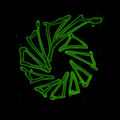Template:Selected anniversaries/October 3: Difference between revisions
No edit summary |
No edit summary |
||
| Line 16: | Line 16: | ||
||1849: American author Edgar Allan Poe is found delirious in a gutter in Baltimore under mysterious circumstances; it is the last time he is seen in public before his death. | ||1849: American author Edgar Allan Poe is found delirious in a gutter in Baltimore under mysterious circumstances; it is the last time he is seen in public before his death. | ||
||1854: Karl Hermann Struve born ... astronomer. | ||1854: Karl Hermann Struve born ... astronomer. ... Struve's research was focused on determining the positions of stellar objects. He was particularly known for his work on satellites of planets of the Solar System and development of the intersatellite method of correcting their orbital position. The mathematical Struve function is named after him. Pic. | ||
||1863: Stanisław Zaremba born ... mathematician and engineer. His research in partial differential equations, applied mathematics and classical analysis, particularly on harmonic functions, gained him a wide recognition. Pic. | ||1863: Stanisław Zaremba born ... mathematician and engineer. His research in partial differential equations, applied mathematics and classical analysis, particularly on harmonic functions, gained him a wide recognition. Pic. | ||
| Line 26: | Line 26: | ||
File:Canterbury_scrying_engine.jpg|link=Canterbury scrying engine|1882: [[Canterbury scrying engine]] reprogrammed to detect and expose [[crimes against mathematical constants]]. | File:Canterbury_scrying_engine.jpg|link=Canterbury scrying engine|1882: [[Canterbury scrying engine]] reprogrammed to detect and expose [[crimes against mathematical constants]]. | ||
||1891: Édouard Lucas dies . | File:Édouard Lucas.png|link=Édouard Lucas (nonfiction)|1891: [[Édouard Lucas (nonfiction)|Édouard Lucas]] dies. He studied the Fibonacci sequence; the related Lucas sequences and Lucas numbers are named after him. Pic. | ||
|| | ||1924: Harvey Kurtzman born ... cartoonist. | ||
||1928: Jack Kenneth Hale born ... mathematician working primarily in the field of dynamical systems and functional differential equations. Nopic. | ||1928: Jack Kenneth Hale born ... mathematician working primarily in the field of dynamical systems and functional differential equations. Nopic. | ||
Revision as of 07:28, 3 October 2018
1881: Mathematician and religious leader Orson Pratt dies. As part of his system of Mormon theology, Pratt embraced the philosophical doctrine of hylozoism.
1882: Canterbury scrying engine reprogrammed to detect and expose crimes against mathematical constants.
1891: Édouard Lucas dies. He studied the Fibonacci sequence; the related Lucas sequences and Lucas numbers are named after him. Pic.
1930: Mathematician Robin Farquharson born. He will write an influential analysis of voting systems in his doctoral thesis, later published as Theory of Voting.
2006: Mathematician and physicist John Crank dies. He worked on the numerical solution of partial differential equations; his work with Phyllis Nicolson on the heat equation resulted in the Crank–Nicolson method.
2012: Physicist and astrophysicist Robert F. Christy dies. He is generally credited with the insight that a solid sub-critical mass of plutonium could be explosively compressed into supercriticality, a great simplification of earlier concepts of implosion requiring hollow shells.
2018: Green Spiral voted Picture of the Day by the citizens of New Minneapolis, Canada.






